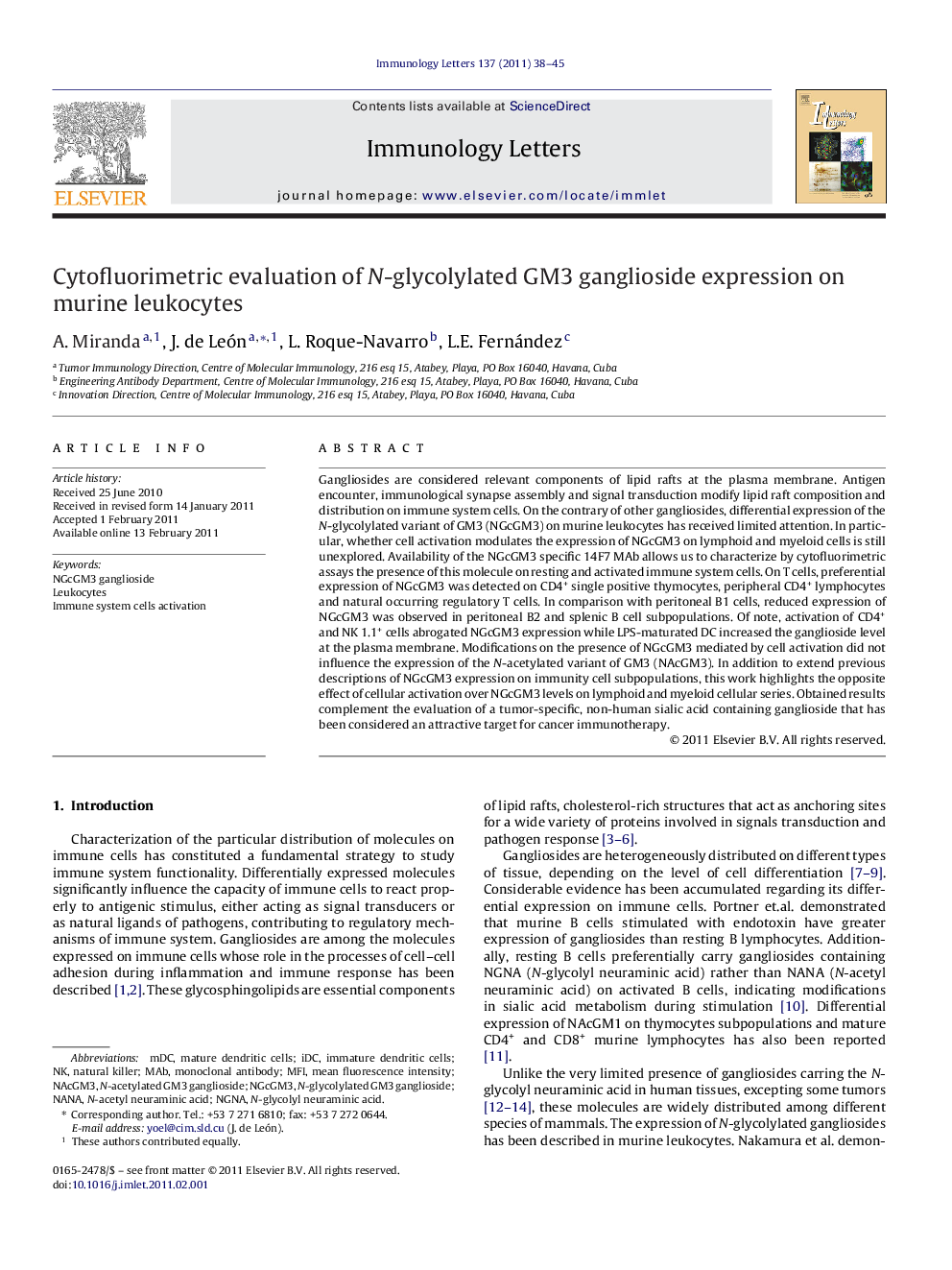| Article ID | Journal | Published Year | Pages | File Type |
|---|---|---|---|---|
| 3355704 | Immunology Letters | 2011 | 8 Pages |
Abstract
Gangliosides are considered relevant components of lipid rafts at the plasma membrane. Antigen encounter, immunological synapse assembly and signal transduction modify lipid raft composition and distribution on immune system cells. On the contrary of other gangliosides, differential expression of the N-glycolylated variant of GM3 (NGcGM3) on murine leukocytes has received limited attention. In particular, whether cell activation modulates the expression of NGcGM3 on lymphoid and myeloid cells is still unexplored. Availability of the NGcGM3 specific 14F7 MAb allows us to characterize by cytofluorimetric assays the presence of this molecule on resting and activated immune system cells. On T cells, preferential expression of NGcGM3 was detected on CD4+ single positive thymocytes, peripheral CD4+ lymphocytes and natural occurring regulatory T cells. In comparison with peritoneal B1 cells, reduced expression of NGcGM3 was observed in peritoneal B2 and splenic B cell subpopulations. Of note, activation of CD4+ and NK 1.1+ cells abrogated NGcGM3 expression while LPS-maturated DC increased the ganglioside level at the plasma membrane. Modifications on the presence of NGcGM3 mediated by cell activation did not influence the expression of the N-acetylated variant of GM3 (NAcGM3). In addition to extend previous descriptions of NGcGM3 expression on immunity cell subpopulations, this work highlights the opposite effect of cellular activation over NGcGM3 levels on lymphoid and myeloid cellular series. Obtained results complement the evaluation of a tumor-specific, non-human sialic acid containing ganglioside that has been considered an attractive target for cancer immunotherapy.
Keywords
Related Topics
Life Sciences
Immunology and Microbiology
Immunology
Authors
A. Miranda, J. de León, L. Roque-Navarro, L.E. Fernández,
